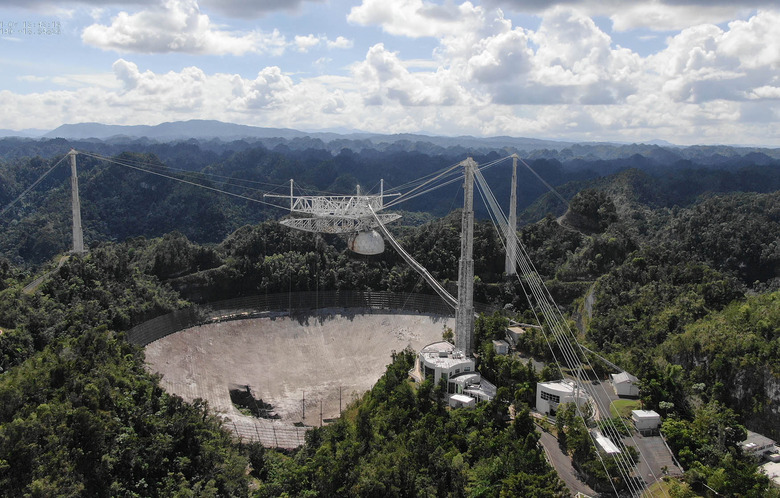Cleaning Up The Destroyed Arecibo Observatory Is Going To Cost So Much Money
It's been a few months since we heard any significant news about the Arecibo Observatory in Puerto Rico. The location was of huge scientific importance thanks to the massive radio telescope that had been in use for over half a century. That was before structural damage forced its operators into a tough decision to either save the telescope or just decommission it and clean up the site where the telescope once sat.
Ultimately, due to a combination of bad luck and budgetary concerns, the National Science Foundation — the group that ran the observatory — decided it would be best to just destroy the colossal dish and accompanying equipment. Now, for the first time, we're getting a look at how much the cleanup bill is going to be, and let's just say the telescope's observations aren't the only thing that's astronomical.
As Gizmodo reports, engineers are still investigating exactly what chain of events led to the initial damage and subsequent structural failings. While they do their work, the cost of cleaning up the debris and breaking down what's left of the dish is being calculated. At present, the best guess estimates range from $30 million to a whopping $50 million. That's a whole lot of cash just to be left with an empty spot when they're finally done, but it's what will need to happen if the site is ever to be used again, for scientific purposes or otherwise.
The story of the Arecibo Observatory's demise is a sad one. The telescope endured a structural collapse that, at least initially, appeared to be repairable. The NSF was working on a plan to get the dish back up and running after a survey of the rest of the telescope suggested it was structurally sound. However, as work crews were waiting on delivery of new materials to begin the repairs, one of the telescope's massive cables failed, despite the fact that it was rated to hold much more than it was holding at the time.
The cable caused significant additional damage, but even more importantly it revealed that, after 57 years in operation, the structural integrity of the dish just wasn't what engineers thought it was. Ultimately the NSF was forced to declare the dish a lost cause and decommission it completely. As one final act, the telescope endured yet another structural failure in the weeks that followed, proving that the group had made the right call.
Now, months later, the costs of decommissioning and removing the dish are becoming clearer. A $50 million clean-up bill would be painful for any scientific organization, but the National Science Foundation can at least take solace in the fact that the dish did some absolutely incredible work in the many decades it was with it. It's unclear what the future holds for the site, and whether the group will want to build another radio telescope, or what the timeline for that project might be.
